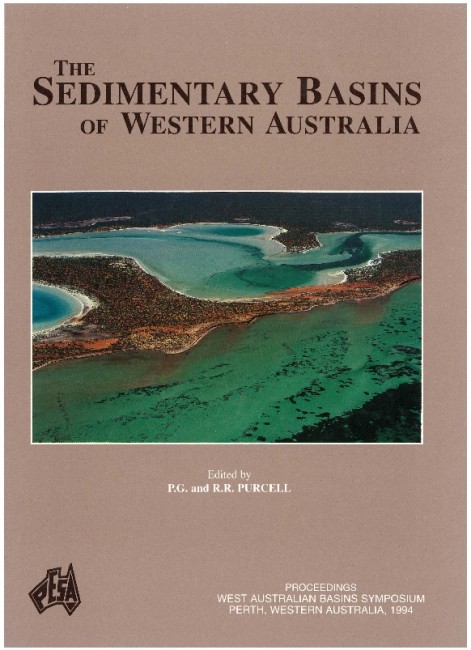Publication Name: The Sedimentary Basins of WA
Authors: R.M. Hocking, A.J. Mory and I.R. Williams
Publication Volume: 1
Date Published: July 1994
Number of Pages: 34
Reference Type: Book Section
Abstract:
Most Neoproterozoic and Phanerozoic basins in Western Australia can be classified as Neoproterozoic, Palaeozoic or Mesozoic-Cainozoic, based on the age of their dominant fill and tectonic activity. The Neoproterozoic basins are the Savory, Amadeus and Officer basins, and possibly the Yeneena and Karara basins. The Palaeozoic basins are the Gunbarrel, Southern Bonaparte, Ord, Canning and Southern Carnarvon basins. These basins developed in, and were active depocentres during, the Palaeozoic; Mesozoic andCainozoic deposits within them are essentially veneers. The Mesozoic-Cainozoic basins are the Northern Bonaparte, Browse, Roebuck, and Northern Carnarvon basins, and are grouped into the Westralian Superbasin. These basins were active depocentres during the Mesozoic, as Gondwana fragmented, and contain a common, seawards-thickening wedge of Cainozoic sedimentary rocks. The Perth Basin contains both Palaeozoic and Mesozoic elements, and the Collie Basin is regarded as an outlier of it. Along Western Australia's southern margin, the Eucla and Bremer basins are primarily Cainozoic depocentres, but contain small grabens infilled by Mesozoic rocks.Subdivisions within the basins have been rationalised. Their nomenclature is based on presently used names,
coupled to a defined, common set of descriptive terms. Subdivision boundaries are derived from known major structural elements, interpreted depth-to-magnetic-basement, and/or depth to a significant defining horizon. The subdivisions will evolve as additional data and new concepts emerge.


